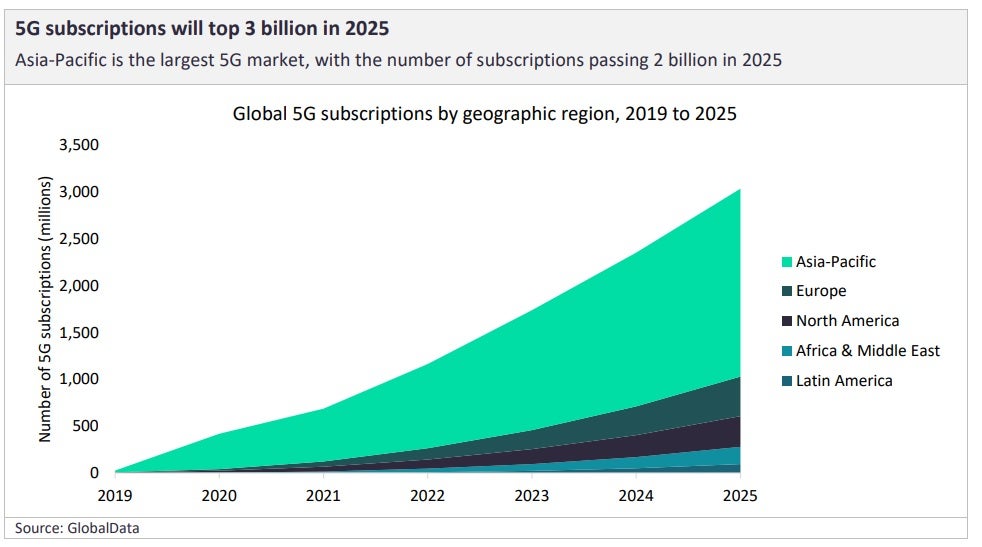
In recent years, the medical device industry has witnessed significant advancements in technology, from continuous remote patient monitoring to sophisticated surgical robots. As these devices become more advanced, their rate of data generation increases.
This growth in data sets enables physicians to make more accurate assessments of patients, but it may also slow down overall hospital efficiency on current generation connectivity technology. Upgrading to 5G, with its 20 times higher peak data rate, eliminates patient information bottlenecks and offers a measure of futureproofing.
According to GlobalData, the total number of mobile 5G subscriptions will reach three billion worldwide by 2025, equivalent to 28% of all mobile phone subscriptions. This growth will accelerate in the coming years, supported by increased spectrum availability and higher investment by operators in network rollouts.

Advancing robot surgery with low latency and high bandwidth
GlobalData’s 5G in Medical Devices research reports that: “5G-enabled surgical robots allow for the possibility of remote robotic surgery procedures. Early clinical studies have already demonstrated that spine procedures can be conducted remotely on a 5G connection.
“In the near future, patients in more rural areas may be able to receive surgery from a remote specialist without the need for extensive travel.”
5G’s low latency and high bandwidth open doors to advanced surgery. Surgeons can control robotic instruments remotely with remarkable precision and medical care can be brought to remote areas, where access to it is more limited.
Imaging technologies such as MRI and CT scans generate huge amounts of data. The high data-transfer rates of 5G can accelerate the transmission of data to experts for quick analysis, significantly reducing diagnosis times and enabling timely medical interventions.
5G for remote patient monitoring and wearable devices
Devices such as continuous glucose monitors (CGM) or oximeters are part of an expanding range of monitors and sensors that were developed initially for clinical settings but have now been modified to be used by individuals in the outside world.
One breakthrough benefit of this kind of continuous monitoring is the potential for preventative medical intervention, as problems can be detected immediately. 5G promises to improve the real-time reliability of wearable medical devices that measure and monitor a variety of health metrics, such as vital signs, heart rate and blood glucose levels.
The integration of 5G technology in wearable medical devices marks a significant leap forward in healthcare. With faster connectivity, improved remote capabilities, enhanced diagnostics and a range of other benefits, medical professionals and patients can experience more efficient and effective healthcare services.
Meeting future challenges
As technology continues to advance, the full extent of 5G’s impact on medical devices is only beginning to be realised, promising a future where healthcare is more connected, accessible and innovative than ever before.
However, one challenge for medical device manufacturers developing 5G-enabled devices is finding medical wire components that are perfectly calibrated for accurate and reliable patient data monitoring.
Alleima is an expert in producing components that are used for remote patient monitoring, providing perfectly configured medical wires for accurate sensing within the human body and reliable transmission of patient data. The company is working closely with medical device manufacturers to develop components to fit the global technology innovations. Today Alleima has developed wire-based components for devices such as glucose monitors and pulse oximeters, which are seeing increased usage around the world.
To find out how Alleima’s experts can help your next medical device project, download the paper below.


